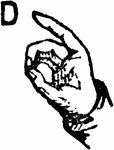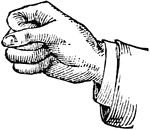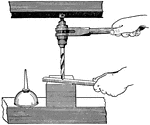Non-Vocal Mixed Lip Consonant
Consonants have a closed or narrowly expanded adjustment of the vocal organs, so that in their production…

Non-Vocal Mixed Point Consonant
Consonants have a closed or narrowly expanded adjustment of the vocal organs, so that in their production…

Non-Vocal Mixed Top Consonant
Consonants have a closed or narrowly expanded adjustment of the vocal organs, so that in their production…

Non-Vocal Mixed-Divided Back Consonant
Consonants have a closed or narrowly expanded adjustment of the vocal organs, so that in their production…

Non-Vocal Mixed-Divided Lip Consonant
Consonants have a closed or narrowly expanded adjustment of the vocal organs, so that in their production…
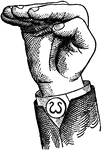
Non-Vocal Mixed-Divided Point Consonant
Consonants have a closed or narrowly expanded adjustment of the vocal organs, so that in their production…
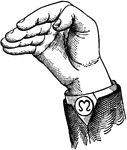
Non-Vocal Mixed-Divided Top Consonant
Consonants have a closed or narrowly expanded adjustment of the vocal organs, so that in their production…
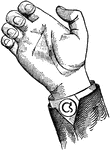
Non-Vocal Nasal Back Consonant
Consonants have a closed or narrowly expanded adjustment of the vocal organs, so that in their production…

Non-Vocal Nasal Lip Consonant
Consonants have a closed or narrowly expanded adjustment of the vocal organs, so that in their production…

Non-Vocal Nasal Point Consonant
Consonants have a closed or narrowly expanded adjustment of the vocal organs, so that in their production…

Non-Vocal Nasal Top Consonant
Consonants have a closed or narrowly expanded adjustment of the vocal organs, so that in their production…

Non-Vocal Primary Back Consonant
Consonants have a closed or narrowly expanded adjustment of the vocal organs, so that in their production…

Non-Vocal Primary Lip Consonant
Consonants have a closed or narrowly expanded adjustment of the vocal organs, so that in their production…

Non-Vocal Primary Point Consonant
Consonants have a closed or narrowly expanded adjustment of the vocal organs, so that in their production…

Non-Vocal Primary Throat Consonant
Consonants have a closed or narrowly expanded adjustment of the vocal organs, so that in their production…

Non-Vocal Primary Throat Consonant
Consonants have a closed or narrowly expanded adjustment of the vocal organs, so that in their production…
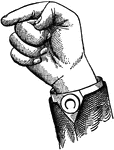
Non-Vocal Primary Top Consonant
Consonants have a closed or narrowly expanded adjustment of the vocal organs, so that in their production…
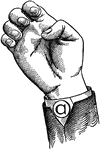
Non-Vocal Shut Back Consonant
Consonants have a closed or narrowly expanded adjustment of the vocal organs, so that in their production…

Non-Vocal Shut Lip Consonant
Consonants have a closed or narrowly expanded adjustment of the vocal organs, so that in their production…

Non-Vocal Shut Point Consonant
Consonants have a closed or narrowly expanded adjustment of the vocal organs, so that in their production…

Non-Vocal Shut Throat Consonant
Consonants have a closed or narrowly expanded adjustment of the vocal organs, so that in their production…

Non-Vocal Shut Top Consonant
Consonants have a closed or narrowly expanded adjustment of the vocal organs, so that in their production…

Orinasal Symbol Throat Consonant
Consonants have a closed or narrowly expanded adjustment of the vocal organs, so that in their production…
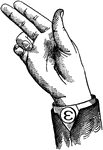
Vocalized Divided Back Consonant
Consonants have a closed or narrowly expanded adjustment of the vocal organs, so that in their production…

Vocalized Divided Lip Consonant
Consonants have a closed or narrowly expanded adjustment of the vocal organs, so that in their production…

Vocalized Divided Point Consonant
Consonants have a closed or narrowly expanded adjustment of the vocal organs, so that in their production…
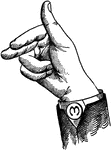
Vocalized Divided Top Consonant
Consonants have a closed or narrowly expanded adjustment of the vocal organs, so that in their production…
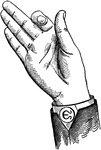
Vocalized Mixed Back Consonant
Consonants have a closed or narrowly expanded adjustment of the vocal organs, so that in their production…

Vocalized Mixed Lip Consonant
Consonants have a closed or narrowly expanded adjustment of the vocal organs, so that in their production…

Vocalized Mixed Point Consonant
Consonants have a closed or narrowly expanded adjustment of the vocal organs, so that in their production…
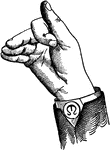
Vocalized Mixed Top Consonant
Consonants have a closed or narrowly expanded adjustment of the vocal organs, so that in their production…

Vocalized Mixed-Divided Back Consonant
Consonants have a closed or narrowly expanded adjustment of the vocal organs, so that in their production…

Vocalized Mixed-Divided Lip Consonant
Consonants have a closed or narrowly expanded adjustment of the vocal organs, so that in their production…

Vocalized Mixed-Divided Point Consonant
Consonants have a closed or narrowly expanded adjustment of the vocal organs, so that in their production…

Vocalized Mixed-Divided Top Consonant
Consonants have a closed or narrowly expanded adjustment of the vocal organs, so that in their production…
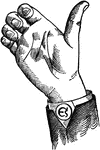
Vocalized Nasal Back Consonant
Consonants have a closed or narrowly expanded adjustment of the vocal organs, so that in their production…

Vocalized Nasal Lip Consonant
Consonants have a closed or narrowly expanded adjustment of the vocal organs, so that in their production…
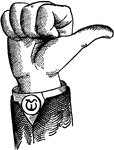
Vocalized Nasal Point Consonant
Consonants have a closed or narrowly expanded adjustment of the vocal organs, so that in their production…

Vocalized Nasal Top Consonant
Consonants have a closed or narrowly expanded adjustment of the vocal organs, so that in their production…

Vocalized Primary Back Consonant
Consonants have a closed or narrowly expanded adjustment of the vocal organs, so that in their production…

Vocalized Primary Lip Consonant
Consonants have a closed or narrowly expanded adjustment of the vocal organs, so that in their production…

Vocalized Primary Point Consonant
Consonants have a closed or narrowly expanded adjustment of the vocal organs, so that in their production…

Vocalized Primary Throat Consonant
Consonants have a closed or narrowly expanded adjustment of the vocal organs, so that in their production…

Vocalized Primary Top Consonant
Consonants have a closed or narrowly expanded adjustment of the vocal organs, so that in their production…

Vocalized Shut Back Consonant
Consonants have a closed or narrowly expanded adjustment of the vocal organs, so that in their production…

Vocalized Shut Lip Consonant
Consonants have a closed or narrowly expanded adjustment of the vocal organs, so that in their production…

Vocalized Shut Point Consonant
Consonants have a closed or narrowly expanded adjustment of the vocal organs, so that in their production…
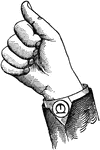
Vocalized Shut Top Consonant
Consonants have a closed or narrowly expanded adjustment of the vocal organs, so that in their production…

Hand Cultivator
The end of a hand plow. The metal part can be unscrewed and affixed to a hand plow, or left on the handle.

Cuneiform Bone
The cuneiform may be distinguished by its pyramidal shape, and by its having an oval, isolated facet…

Cutting Pliers
"Cutting pliers and cutting nippers have a pair of knife edges so arranged as to work exactly opposite…

Explanatory Diagram
1) The first or index finger. 2) The second or middle finger. 3) The third finger. 4) The fourth finger.…

Hand Holding a Drafting Compass
A hand holds and employs a drafting compass, a device used to create precise arcs and circles in mechanical…
